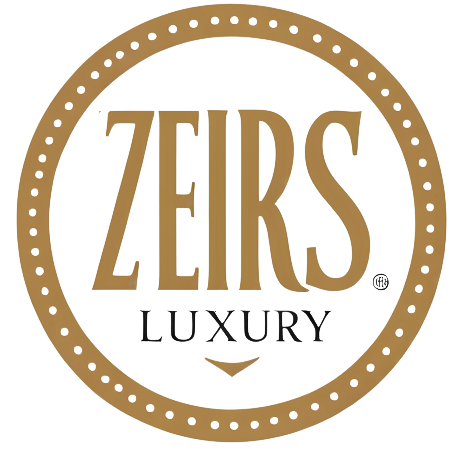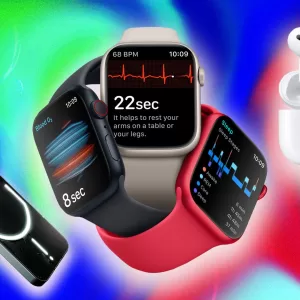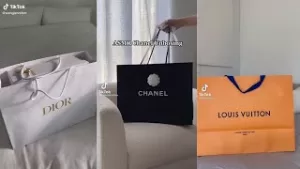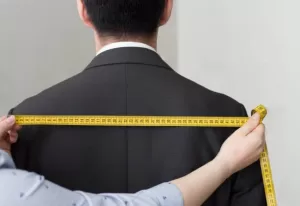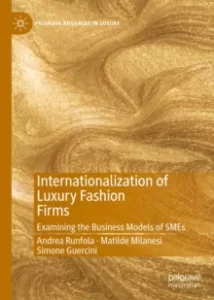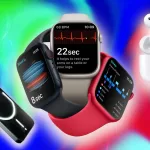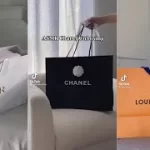
Introduction to Professional Beauty Tools
Defining Beauty Tools and Their Importance
- **Beauty Tools:** Devices and instruments used to enhance or improve the appearance of the skin, hair, nails, or makeup application.
- **Importance:** They help professionals achieve precision, efficiency, and high-quality results, ensuring client satisfaction.
- **Types of Tools:** Range from basic tweezers and scissors to sophisticated electronic devices like airbrush systems for makeup application or high-frequency machines for skin treatments.
Overview of the Tools Covered in This Guide
- **Makeup Brushes & Sponges:** Tools for seamless application of makeup products, providing the ability to blend and layer for a flawless finish.
- **Skincare Devices:** Include facial steamers, exfoliation brushes, and microdermabrasion machines that help prep the skin for treatments or improve its condition.
- **Hair Styling Tools:** Such as hairdryers, flat irons, and curling wands, which are essential for creating various hairstyles and looks.
- **Manicure/Pedicure Instruments:** Tools for shaping, buffing, and caring for nails and cuticles.
- **Disinfection and Cleaning Supplies:** Critical for maintaining hygiene and preventing cross-contamination between clients.
Expanding on the tools mentioned, in the realm of professional beauty courses, these tools become cornerstones of practical training. Students learn not only the theoretical knowledge behind various treatments and makeup applications, but also how to skillfully wield these tools to execute the learned techniques with mastery. The training also covers the maintenance, cleaning, and proper storage of these tools to extend their usability and ensure compliance with health regulations.
Professional courses often provide in-depth knowledge about each tool’s specific use case, allowing aspiring beauty experts to understand which brush shape to use for contouring, the proper way to operate skincare gadgets for maximum effect, or the best practices for sterilizing metal implements after each use.
The incorporation of these tools into a professional’s repertoire is further subdivided based on the specialized area of beauty they wish to focus on, whether it’s makeup artistry, skincare, hair styling, or nail technology. This allows for a highly tailored learning experience and equips students with the dexterity and know-how to become successful in their chosen field.
Makeup Brushes 101
When it comes to creating the perfect makeup look, the tools you use are just as important as the products. A good set of makeup brushes can make all the difference in how your makeup applies, blends, and holds up throughout the day. I recognize the importance of choosing the right brushes to complement a beauty routine, and with this guide, you’ll be equipped to select the best options for a flawless and professional finish — all with the added benefits of free shipping on orders above Rs. 999, cash on delivery at no extra cost, and the assurance of 100% secure payment.
Understanding Different Types of Makeup Brushes
**Foundation Brush:**
– **Shape:** Flat, dome-shaped or angled
– **Use:** Smooth application for liquid or cream foundations
**Concealer Brush:**
– **Shape:** Small, flat brush with a pointed tip
– **Use:** Precise application to cover blemishes and under-eye circles
**Blush Brush:**
– **Shape:** Fluffy and rounded
– **Use:** Softly applies powder blush for a natural-looking flush
**Powder Brush:**
– **Shape:** Large, fluffy and rounded
– **Use:** To apply loose or pressed powder for setting makeup
**Eyeshadow Brush:**
– **Shape:** Flat and rounded or slightly tapered
– **Use:** For applying and blending eyeshadow on the lids
**Eyeliner Brush:**
– **Shape:** Fine, pointed tip or angled
– **Use:** Creating sharp lines with gel or liquid eyeliner
Knowing the shape, size, and bristle type for each makeup brush can transform your application process. For instance, synthetic bristles are often better for liquid products, while natural bristles may be preferred for powders. The density of the brush affects the product’s application intensity – denser brushes will deposit more product, which is ideal for contouring, while less dense brushes deliver a lighter touch, perfect for a blush or highlighter.
The Role of Brushes in Achieving Flawless Makeup
The key to professional-looking makeup isn’t just in the products you choose but in the tools you use to apply them. Having the right brushes in your arsenal allows you to:
– **Enhance Precision:** A brush with the right shape and size gives you control for exact placement and sharp lines.
– **Achieve Desired Coverage:** From sheer to full coverage, brushes determine how much product is applied to the skin.
– **Blend Seamlessly:** Quality brushes can seamlessly blend makeup for a smooth, airbrushed look.
– **Maintain Hygiene:** Unlike fingers, brushes help you avoid transferring oils or bacteria onto your facial skin.
Maintaining the brushes is also crucial. Regular cleaning prevents product buildup and extends the life of the brushes, ensuring consistent application every time.
In summary, with the right set of tools catered to your makeup needs, your beauty routine will be elevated, giving you the ability to create looks that feel and look impeccably done. With options for free shipping, cash on delivery, and secure payment, acquiring these essential tools is both convenient and reliable.
The GUIDE Wand: A Revolutionary Beauty Tool
The GUIDE Wand is not just another addition to my beauty kit; it’s a groundbreaking innovation designed to enhance the makeup application experience for individuals of all abilities. Since its launch, the Wand has received numerous accolades, including the prestigious Allure Best of Beauty Award, solidifying its place in the beauty industry as a tool that redefines traditional makeup application.
Features of Our Award-Winning GUIDE Wand
– **Universally Designed:** Developed with input from makeup users, ergonomic experts, and an award-winning design team, the Wand is crafted to fit comfortably in any hand.
– **Mindfulness in Beauty:** The understanding that beauty is for everyone has led to the creation of a product that’s cruelty-free, vegan, and designed with every consumer in mind.
– **Artistry Made Easy:** The design and functionality of the GUIDE Wand make makeup application more accessible, giving individuals the confidence to create precise looks with ease.
– **Award-Winning Recognition:** Celebrated by both users and industry experts, the Wand’s accolades include the Daytime Beauty Award for “Tool of the Year” and the Allure Best of Beauty Breakthrough Award.
– **Empty Shopping Cart Reminder:** The subtle prompt to check out the GUIDE Wand contributes to a user-focused shopping experience, ensuring that interested visitors don’t leave without considering this game-changing tool.
As the creator of the GUIDE Wand, witnessing firsthand the difference it has made for so many underscores my passion for inclusive beauty. This tool is more than just a product; it’s a symbol of our dedication to universal design and the belief that everyone should have the opportunity to feel confident and empowered in their makeup routine.
Using the GUIDE Wand for Multiple Makeup Applications
The GUIDE Wand is versatile, with uses that extend beyond a single makeup step. Here’s how it can transform your makeup application:
– **Eyeliners and Brows:** With its precise design, the Wand allows for sharp and consistent eyeliner and eyebrow application, suitable for the award-winning Guide Eyeliner Duo and Guide Brow Moment.
– **Foundation and Concealer:** The ergonomic handle simplifies the application of base products, giving a steady grip and control that helps achieve an even, flawless complexion.
– **Blush and Contour:** Its ease of use assists in effortlessly sculpting the face with blush and contour, blending the products seamlessly onto the skin.
I’m proud of how the GUIDE Wand is making strides in the beauty industry by introducing an accessible, innovative approach to makeup that caters to everyone. Its design and versatility showcase that thoughtful innovation can lead to more inclusivity in beauty—a mission close to my heart and one I’ll continue to champion through Guide Beauty and beyond.
Hairdressing Essentials
Moving beyond the basics of beauty with makeup brushes, let’s delve into hairdressing essentials. The tools a hairstylist uses are the foundational elements that can make or break a hairstyle. Precision, skill, and the right equipment are all imperative for achieving brilliant results in hair cutting, styling, and coloring. Here’s a guide to some of the crucial tools and techniques necessary for hairdressing.
Cutting Techniques and the Right Scissors
When I approach the art of hair cutting, I understand that the scissors I select are not just tools but an extension of my hand. The diversity in cutting techniques such as layering, texturizing, and blunt cutting requires different types of scissors to execute each style flawlessly. Here are some of the scissors and their uses:
**Hairdressing Shears:**
– **Type:** Classic, all-purpose cutting scissors
– **Use:** For basic haircuts and trims
**Thinning Shears:**
– **Type:** Scissors with one or both blades featuring teeth
– **Use:** To thin out thick hair and create texture
**Razor:**
– **Type:** A sharp blade that can be used alone or in a handle
– **Use:** For softening edges or adding texture
**Left-Handed Scissors:**
– **Type:** Specifically designed for left-handed stylists
– **Use:** For comfort and accuracy in cutting if left-handed
Selecting the right type of scissors is pivotal, and so is the maintenance of these tools. I ensure that my scissors are always sharp and well-lubricated to deliver precise cuts and avoid hair damage or split ends.
Coloring and Styling Tools for Professional Results
As a hairstylist, I respect the art of hair coloring and the necessity to use tools that allow for the precise and even application of color. The tools I utilize in coloring services include:
**Tint Brushes:**
– **Type:** Brushes with stiff bristles
– **Use:** For applying hair color and bleach
**Mixing Bowls:**
– **Type:** Plastic or glass bowls
– **Use:** For mixing color and bleach before application
**Foil Sheets:**
– **Type:** Pre-cut aluminum foil or roll
– **Use:** For highlighting and sectioning in color treatments
My styling toolbox is also replete with various gadgets and products that aid in creating lasting styles:
**Blow Dryer:**
– **Type:** Professional-grade with heat and speed settings
– **Use:** For drying hair and creating volume or sleek looks
**Curling Irons/Wands:**
– **Type:** Varying sizes for different curl types
– **Use:** To create waves or curls with lasting hold
**Flat Irons:**
– **Type:** Ceramic or titanium plates
– **Use:** For straightening hair and creating smooth finishes
**Hair Products:**
– **Type:** Gels, mousses, sprays, and serums
– **Use:** For hold, texture, shine, and heat protection during styling
It’s crucial for me to stay updated with the latest hairdressing techniques and tools to assure my clients that they are receiving top-notch services reflective of current trends. Maintaining my equipment, continuous education, and dedicating myself to the craft are pillars of my professional ethos.
Innovations in Haircare and Styling
The beauty industry is constantly evolving, and as a professional hairstylist, I’m on the front lines of experiencing and applying the latest innovations in haircare and styling. Keeping up with these changes not only helps me stay competitive but also enables me to provide the best possible service to my clientele.
The Impact of Technology on Hairdressing
Advancements in technology have brought about significant improvements in the tools and products I use. Hair analysis technology, for example, allows me to understand the client’s hair condition at a microscopic level. This has a tremendous impact on my ability to tailor treatments and services specifically to the client’s hair health needs.
**Digital Apps:**
– **Use:** To visualize haircuts and colors on clients before the actual service
– **Benefits:** Clients can preview different looks, leading to higher satisfaction and eliminating indecision.
**Smart Flat Irons:**
– **Type:** Flat irons with sensors and adjustable temperatures
– **Use:** Instant heat adjustment to suit individual hair types and conditions
– **Benefits:** Reduced hair damage due to predictive heat settings.
**Cordless/Stylish Hair Tools:**
– **Advantages:** Offers flexibility and ease of movement around the client
– **Use:** To enhance the styling experience without being tethered to a power outlet
– **Benefits:** Improves efficiency and the overall client experience.
Incorporating these technological improvements into my practices ensures a more personalized, effective, and innovative approach to hairstyling.
Exploring New Hair Styling Gadgets
Every year, new gadgets enter the market, promising to revolutionize the way we style hair. I’m consistently evaluating and testing these innovations to determine whether they could enhance my service offering.
**Automatic Curling Wands:**
– **Use:** To create curls with minimal effort
– **Benefits:** Consistent results and less manual work, which is critical on busy days.
**Ionic Hair Brushes:**
– **Type:** Brushes that emit ions to help smooth hair and reduce frizz
– **Use:** For a shiny and sleek finish, particularly effective for clients with frizzy hair
– **Benefits:** Improves the texture and manageability of hair.
**Water Flosser for Hair:**
– **Type:** A tool used to deep clean the scalp
– **Use:** Clears away dead skin cells and product buildup for a healthier scalp
– **Benefits:** Promotes hair growth and maintains scalp health, which is essential for great styling.
I rest assured knowing that by embracing these advancements, I not only enhance the efficiency of my work but also contribute positively to the overall health and aesthetic of my clients’ hair. Staying informed and adaptable in this dynamic industry is crucial for success, and I’m committed to providing services that embody both traditional skill and cutting-edge innovation.
Makeup Sponges and Blenders
Comparing Types of Sponges and Their Uses
As a beauty enthusiast, I have come to understand that the world of makeup sponges and blenders is vast and varied. Each type of sponge has its unique features and specific uses that can help achieve a seamless makeup application. Some of the most common types of sponges include:
**Classic Teardrop Sponge:**
– **Type:** Rounded bottom with a pointed tip
– **Use:** Ideal for both broad and targeted application; the rounded side for foundation and blush, the tip for concealer.
**Microfiber Velvet Sponge:**
– **Type:** Soft, textured outer layer
– **Use:** Provides a more natural, airbrushed finish for liquid products.
**Flat-Edged Sponge:**
– **Type:** One flat side with rounded edges
– **Use:** Perfect for contouring and baking under the eyes.
**Sculpting Sponge:**
– **Type:** Multi-faceted surfaces
– **Use:** Ideal for sculpting and precise contouring due to its angles and edges.
**Mini Sponges:**
– **Type:** Smaller size for detailed work
– **Use:** Suitable for blending eye concealer or precise spot-correcting.
Understanding the unique benefits of each type allows me to tailor my approach to makeup application according to the look I want to achieve. I also ensure that my sponges are made from non-latex material to avoid any allergic reactions and that they are environmentally friendly.
Techniques for Flawless Application with Sponges
Using makeup sponges is not just about the tool, but also the technique. I follow a few key steps to ensure that my foundation or concealer blends seamlessly into my skin:
**Dampening the Sponge:**
– Before use, I ensure the sponge is dampened. This allows for a more even distribution of the product and prevents the sponge from absorbing too much makeup.
**Stippling Motion:**
– I use a stippling or bouncing motion rather than dragging the sponge across the skin. This helps to achieve a “second-skin” look while minimizing product waste.
**Using the Right Amount of Product:**
– I apply the makeup initially to the back of my hand and then dip the sponge in. This ensures that I am not using too much product and gives me more control over the coverage.
**Setting with Powder:**
– If I require a lasting finish, I use the flat edge of a sponge to press setting powder into areas that are prone to creasing or oiliness.
**Regular Cleaning:**
– Keeping the sponges clean is as essential as the application itself. I clean my sponges regularly with gentle soap and warm water to prevent the buildup of bacteria and extend the life of the sponges.
To sum up, I regard selecting the correct makeup sponge and mastering the application techniques as an integral part of creating a flawless makeup look. Embracing these nuances allows me to bring out the best in my beauty routine.
Beauty Tools for Skincare
Tools for Exfoliation and Facials
Incorporating the right beauty tools into your skincare routine can significantly enhance the effectiveness of the products you use and the overall health of your skin. Exfoliation and facial tools, in particular, enable me to achieve a deeper clean and fresher skin.
**Manual Exfoliators:**
– **Type:** Facial brushes, scrubs, sponges
– **Use:** I use these tools to gently buff away dead skin cells, which promotes cell turnover and reveals a smoother skin surface.
**Chemical Exfoliators:**
– **Type:** AHAs, BHAs, and PHAs-infused pads or solutions
– **Use:** I apply these solutions with a cotton pad or directly with fingers to help dissolve skin cells, aiding in resurfacing and clarifying my skin.
**Facial Cleansing Brushes:**
– **Type:** Rotating or sonic-powered brushes
– **Use:** I integrate these into my cleansing routine to ensure a thorough removal of makeup, dirt, and oils, providing a deep-clean feel and appearance.
**Dermaplaning Tools:**
– **Type:** Single blade for removing peach fuzz and exfoliation
– **Use:** I gently glide the tool across my face to scrape off dead skin cells and fine hairs, which can also help makeup to sit better on the skin.
**Face Rollers and Gua Sha:**
– **Type:** Jade or quartz stones
– **Use:** I routinely use these to massage the face, which can help in lymphatic drainage, reducing puffiness, and improving blood circulation.
Each tool is selected based on the specific needs of my skin on any given day, ensuring that I enhance my skincare regime effectively.
Advanced Skincare Devices for Professionals
As a dedicated skincare aficionado, I’ve come to appreciate the value of advanced skincare devices usually found in a professional setting, which are becoming increasingly available for at-home use.
**Microcurrent Devices:**
– **Type:** Deliver low-level electrical currents
– **Use:** I employ this tool to tone and contour my face, as it stimulates muscle activity and can provide a lifted appearance over time.
**LED Light Therapy Masks:**
– **Type:** Emits varying wavelengths of light
– **Use:** Utilizing this device regularly contributes to my skin health by addressing issues like acne, inflammation, and signs of aging through different colors of light.
**Ultrasonic Skin Spatulas:**
– **Type:** Uses vibrations to exfoliate and infuse products
– **Use:** I generate ultrasonic waves with this tool to dislodge blackheads and enhance product absorption.
**Microneedling Rollers:**
– **Type:** Small needles on a rolling device
– **Use:** I carefully use this tool to create micro-injuries on the skin’s surface, which can increase collagen production and improve the effectiveness of topical treatments.
While these professional tools can be quite effective, I make sure to understand and follow proper usage to ensure safety and avoid potential skin damage. They complement my skincare regimen and contribute substantially towards maintaining a youthful and healthy complexion.
The Role of Technology in Beauty Tools
Understanding How Technology Enhances Beauty Tools
My personal grooming routine has drastically transformed with the integration of technology into beauty tools. I have experienced firsthand how technological advancements have elevated simple tools, making them more efficient and effective. Here are some insights on how technology has enhanced beauty tools:
**Sonic Cleansing Brushes:**
– **Technology:** Utilize sonic vibrations
– **Benefit:** Provide a deeper clean than manual washing; they are designed to gently remove dirt and oil, leading to clearer skin.
**LED Light Therapy Devices:**
– **Technology:** Emit specific wavelengths of light
– **Benefit:** Aim to treat various skin issues such as acne and signs of aging; I have noticed a visible improvement in my skin tone with regular use.
**Ionic Hair Tools:**
– **Technology:** Generate negative ions
– **Benefit:** Help to reduce frizz and static in hair; I find my hair looks smoother and shinier after using ionic dryers and straighteners.
**Temperature Control Styling Tools:**
– **Technology:** Precise temperature settings
– **Benefit:** Allow for customization according to hair texture and type; I can style my hair effectively without excessive heat damage.
**Automated Makeup Brush Cleaners:**
– **Technology:** Mechanized cleaning and drying
– **Benefit:** Ensure my makeup brushes are thoroughly cleaned and quickly dried; helps maintain brush quality and hygiene.
I’ve embraced these technological advancements and incorporated them into my beauty routine. As a result, I’ve seen a remarkable improvement in both the health of my skin and hair and the efficiency with which I can achieve my desired looks. Keeping up-to-date with technology in beauty tools has become quintessential to maintaining my personal grooming to the highest standards.
Adapting to Evolving Beauty Technologies
Staying abreast with the continuous progression in beauty technologies is crucial for anyone taking beauty and skincare seriously. I make it a point to follow the latest trends, understanding that these advancements could revolutionize my beauty routine:
**Augmented Reality (AR) Makeup Apps:**
– **Technological Development:** Virtual makeup trials
– **Personal Benefit:** I can try on different looks without physically applying makeup; this saves time and ensures the products I purchase will suit my features.
**Customized Skincare Devices:**
– **Technological Development:** Devices that analyze skin conditions
– **Personal Benefit:** I get tailored skincare recommendations that cater specifically to my skin type and concerns.
**Intelligent Hair Analysis Tools:**
– **Technological Development:** Scanners that assess hair health
– **Personal Benefit:** I am able to understand my hair’s needs better and choose products that will truly make a difference.
My ongoing quest is to learn about and adapt to these evolving technologies, recognizing their potential to not only enhance my own self-care routine but also provide a higher level of personalization and effectiveness. Engaging with the latest beauty tech innovations ensures that my practices are as current and impactful as possible.
Cleaning and Maintenance of Beauty Tools
Best Practices for Hygiene and Longevity
To maintain optimal performance and ensure health safety, cleaning and maintaining beauty tools is imperative. I follow specific practices:
**Regular Cleaning Schedules:**
– I clean makeup brushes weekly to prevent bacteria buildup.
– For devices that come in direct contact with skin, such as sonic brushes, I clean them after each use to maintain hygiene.
**Use of Recommended Cleaners:**
– For brushes, I use a gentle soap or a brush cleaner to avoid damage to the bristles.
– For electronic tools, I use alcohol wipes or cleaners specified by the manufacturer to avoid damaging the circuits.
**Proper Storage:**
– I store tools in a dry and cool place to prevent moisture-related damage.
– Brushes are kept in upright holders to maintain their shape and avoid bristle bending.
**Avoiding Cross-Contamination:**
– I never share my personal beauty tools with others.
– I use separate tools for different products to prevent color or formula contamination.
These practices not only preserve the effectiveness of my beauty tools but also protect my skin and hair from potential damage or infections that could be caused by poorly maintained equipment.
DIY Cleaning Solutions vs. Professional Options
As someone who takes beauty seriously, I understand that thorough cleaning and maintenance are key to my tools’ performance. Here’s how I approach DIY and professional cleaning methods:
**DIY Solutions:**
– For cost-effectiveness, I often opt for DIY cleaning mixtures using household products like vinegar or olive oil, depending on the tool’s material.
– Creating a cleaning solution with gentle shampoos or dish soap mixed with water works effectively for sponges and brushes.
**Professional Cleaning Services:**
– Periodically, I invest in professional cleaning services for deep cleansing of my tools, especially for more complex devices.
**Professional Cleaning Products:**
– When I’m not using DIY solutions, I prefer professional-grade products designed for cleaning beauty tools.
The choice between DIY and professional options often depends on the specific cleaning needs, budget constraints, and personal preferences. Incorporating both ensures that my tools are cared for adequately, which in turn, gives me the confidence that my grooming ritual is as effective and sanitary as possible.
The Environmental Impact of Beauty Tools
Sustainable Practices in the Beauty Industry
As a conscientious consumer, it is imperative to consider the environmental impact of our beauty routines. The beauty industry has made strides in adopting eco-friendly practices which resonate with my personal values of sustainability:
– **Refillable Products:** Companies offer refill options, reducing waste from packaging. I support these initiatives by choosing brands that allow me to refill my favorite products.
– **Eco-friendly Packaging:** Recyclable and biodegradable packaging options have become more prevalent. I make it a point to recycle containers and actively seek out brands that minimize their use of plastics.
– **Clean Energy Production:** Brands utilizing renewable energy sources for manufacturing appeal to me, as they help reduce the overall carbon footprint.
– **Water Conservation Efforts:** Waterless beauty products are not only innovative but also reduce the water consumption in my daily routine while preserving a precious resource.
– **Cruelty-Free and Vegan Products:** Ethical considerations extend to ensuring no animals are harmed for my personal beauty needs.
Implementing these sustainable practices within my beauty regimen is not just about feeling good on the outside but also about making ethically informed decisions that contribute positively to the environment.
Choosing Eco-Friendly and Vegan Beauty Tools
Selecting the right tools is as important as choosing the right products, especially when considering their environmental impact:
– **Bamboo and Wooden Brushes:** Instead of plastic, I opt for hairbrushes and makeup brushes with bamboo or sustainably sourced wooden handles.
– **Biodegradable Sponges:** I use natural sponges or those made from biodegradable materials to minimize my ecological footprint.
– **Recycled Materials:** Beauty tools made from recycled materials are always on my radar, as they help in waste management and resource conservation.
– **Solar Powered Tools:** Whenever available, I select beauty gadgets that are solar-powered, thereby reducing the reliance on electricity or disposable batteries.
– **Vegan Makeup Brushes:** Synthetic bristles are not always eco-friendly, so I look for brands that use vegan and sustainably produced synthetic fibers.
The choice to go for eco-friendly and vegan options extends the care I have for my skin and self to the world around me. Each decision to support more sustainable and ethical manufacturing reflects a commitment to a greener future, one beauty tool at a time. Embracing such products, I not only become an advocate for my own health but also for the betterment of the planet.
Building Your Professional Beauty Toolkit
Essential Tools for Beginners to Experts
Starting in the beauty industry requires a solid toolkit. Here’s what I consider essential:
– **Quality Makeup Brushes:** A set of high-quality brushes for foundation, powder, blush, eyeshadow, and lips is a must-have. I invest in brushes with good pick-up and blending abilities for professional results.
– **Reliable Hair Styling Tools:** Whether it’s hairdryers, straighteners, or curling wands, durable tools that offer versatile styling options are crucial.
– **Hygiene Supplies:** Disinfectant sprays, brush cleaners, and hand sanitizers keep my workspace and tools clean and clients safe.
– **Good Lighting:** A portable ring light ensures I can work in any setting and have consistent lighting for makeup application.
– **A Comprehensive Makeup Kit:** I tailor my kit to include a range of shades and formulas to suit various skin types and preferences.
– **Skincare Essentials:** Pre-makeup skin prep is vital, so I stock up on moisturizers, toners, primers, and SPF for different skin needs.
– **Nail Tools Set:** For manicures and pedicures, I include clippers, files, cuticle pushers, and a variety of nail colors.
These tools form the backbone of a professional’s arsenal, allowing me to cater to a broad client base and ensure high-quality service.
Customizing Your Beauty Toolkit for Specializations
Specializing in certain areas requires additional, specialized tools. Here’s how I’ve customized my toolkit:
– **Advanced Airbrush System:** For bridal or HD makeup, an airbrush system enables me to deliver flawless, long-lasting coverage.
– **Special Effects Supplies:** If I’m working in film or theater, I include latex, adhesives, and prosthetics for creating various special effects.
– **Lash and Brow Kit:** For clients seeking lash extensions or brow shaping, I’ve added tweezers, thread, lash glue, and an assortment of lash styles to my toolkit.
– **Aesthetic Devices:** As someone who is also into skincare, I’ve included tools like microdermabrasion machines, LED light masks, and ultrasonic skin scrubbers.
– **Culturally Diverse Products:** Working in a multicultural environment means having products for different hair textures and skin tones, from denser brushes to an inclusive foundation range.
By customizing my tool selection, I ensure that I’m equipped to offer specialized services and cater to the unique requirements of each client niche. Mastery of these tools ensures I can achieve the precision and impact required for advanced beauty applications, and they have become as integral to my craft as my foundational skills in beauty therapy.
XII. Case Studies: Successful Beauty Professionals
Profiles of Renowned Makeup Artists and Hairstylists
In the journey of exploring the depths of the beauty industry, I have come across numerous case studies that showcase the remarkable careers of successful beauty professionals. Learning about their paths to success has offered me invaluable insights and inspiration.
– **Pat McGrath:** Often referred to as the “Mother of Makeup,” Pat McGrath has secured herself as a legendary figure in the beauty industry. Starting without formal training, she honed her skills and creativity to become one of the most sought-after makeup artists in the world.
– **Vidal Sassoon:** He revolutionized the profession of hairstyling, bringing forth an era of modern and geometric haircuts. He started his career in a very unassuming manner, yet his dedication led him to establish a globally recognized brand.
– **Bobbi Brown:** She began as a makeup artist and evolved into an entrepreneur, creating a cosmetics empire. My takeaway from her career is the importance of creating products that emphasize natural beauty and cater to a broad audience.
– **Jen Atkin:** Atkin’s journey from a small-town girl to a celebrity hairstylist and the founder of Ouai haircare reveals the potential behind hard work and networking within the beauty community.
– **Charlotte Tilbury:** Her transition from makeup artist to a luxury makeup line owner demonstrates the power of personal branding and understanding market needs for luxury beauty products.
Each of these professionals started with a passion similar to mine, and with determination and skill, they carved out their unique places in the beauty industry.
Lessons Learned from Industry Experts
The success stories of these industry mavens hold valuable lessons that I absorb to steer my own career in beauty:
– **Continuous Learning:** Evolving trends in beauty require ongoing education, a mantra for every successful professional I look up to. Staying updated and adaptable to change is crucial in this dynamic field.
– **Innovation:** Leaders in beauty don’t shy away from experimentation. They dare to be different and set trends instead of following them, a mindset I adopt in my work.
– **Networking:** Building relationships and collaborating with others in the industry has been a pivotal part of success for many. Therefore, I invest time in networking and cultivating professional relationships.
– **Brand Ethics:** Professionals who uphold strong values and ethics in their work, be it cruelty-free practices or inclusive product lines, inspire me to align my career with my personal beliefs.
– **Resilience:** The journey is filled with trials and errors. Learning from failures and persisting is a shared trait among these successful beauty icons.
Analyzing these case studies has provided me with a roadmap to transform my passion for beauty into a viable and thriving career. By mirroring some of their strategies and philosophies, I am equipped to navigate the competitive landscape of the beauty industry.
XIII. Conclusion
Summarizing the Key Takeaways from the Ultimate Guide
Reflecting on the multitude of insights gained from this Ultimate Guide to Skincare & Makeup, I’ve curated standout points that have reshaped my approach to beauty:
– **Tailored Skincare Routines:** Identifying my skin type has been pivotal. It guided me to products that serve my specific needs, thus resulting in a more effective skincare routine. The knowledge from the guide has taught me to distinguish between various skincare ingredients and their benefits.
– **The Art of Makeup Application:** Mastering the art of makeup application has enhanced my personal and professional repertoire. From basics like foundation selection to advanced contouring techniques, I’ve learned the significance of each step in creating a flawless look.
– **Product Selection:** Making informed decisions on product purchases has not only economically benefitted me but also ensured that I am using high-quality, suitable products for my client’s varied needs.
– **Technique and Tools:** Understanding the nuances in makeup brushes and beauty tools has sharpened my skills. Whether it’s for blending, lining, or defining, choosing the right tool is as important as the product itself.
– **Self-Care Integration:** Recognizing that skincare and makeup are an extension of self-care has instilled in me a sense of responsibility. It’s not just about the visual end results but also about the process, the care, and the time one dedicates to themselves.
This guide has served as an invaluable asset, offering comprehensive knowledge and a solid foundation from which I have built and refined my skillset.
Resources and Further Reading on Professional Beauty Tools
Expanding my education in the field of beauty is an ongoing pursuit. To continue enhancing my knowledge and skills, I have curated a selection of resources:
– **Professional Journals and Magazines:** Publications like ‘Allure’ and ‘Cosmopolitan’ offer me current trends and expert opinions on skincare and makeup, which are indispensable for staying ahead of the curve.
– **Online Tutorials and Classes:** Platforms like Skillshare, Udemy, and YouTube have an array of tutorials ranging from beginner to expert levels. Not only do they offer practical demonstrations, but they also provide tips and tricks from industry professionals.
– **Trade Shows and Conferences:** Attending beauty industry events has been an enriching experience. The expos and conferences connect me with the latest innovations in products and give me the chance to network with peers and thought leaders.
– **Books and Guides from Beauty Experts:** Reading books penned by field experts like Bobbi Brown’s ‘Makeup Manual’ or Kevyn Aucoin’s ‘Making Faces’ provides deep insights into professional techniques and philosophies.
– **Podcasts and Interviews:** Listening to beauty-themed podcasts and interviews with successful professionals provides me with perspectives on various aspects of the industry, from business ventures to creative processes.
Through these resources, my journey in the world of beauty continues to evolve, equipping me with the tools and knowledge necessary to thrive as a professional and offer exceptional service to those I work with.
